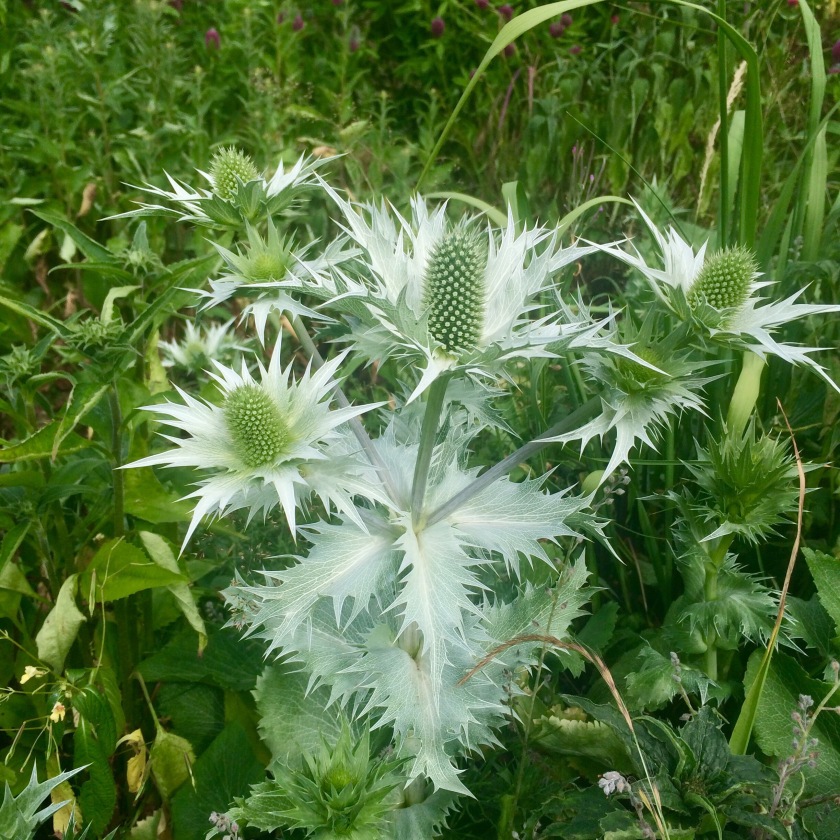 We all love a ‘myth busting’ story. One of those that shows us, by scientific explanation, how a long-held gardening belief is untrue. It may be the fact that putting crocks in the bottom of our pots doesn’t actually improve drainage. It could be the advice of planting according the phases of the moon, which varies according to who you listen to, but rarely shows any benefit in tests. It could be the age old tradition of planting snowdrops ‘in the green’, placing these delicate plants under incredible stress at the toughest point in their yearly cycle.
We all love a ‘myth busting’ story. One of those that shows us, by scientific explanation, how a long-held gardening belief is untrue. It may be the fact that putting crocks in the bottom of our pots doesn’t actually improve drainage. It could be the advice of planting according the phases of the moon, which varies according to who you listen to, but rarely shows any benefit in tests. It could be the age old tradition of planting snowdrops ‘in the green’, placing these delicate plants under incredible stress at the toughest point in their yearly cycle.
Scientific study and rigorous testing can be applied to many areas of the garden. We like to see our horticulture as a science and by carefully monitoring, measuring and quantifying action and reaction we can advance our understanding of how the garden works, becoming better gardeners.
I would like to pause for a moment to consider what these myths actually mean.
For them to have become so widely accepted and repeated there must be a kernel of truth somewhere in them. There must be some precedent that for some people, they did actually work, once.
In the case of snowdrops, the long process of importation meant that by the time the thin-skinned bulbs arrived in the UK they were so dried out they had little chance of living. To get bulbs with green leaves was a guarantee that they were still alive. In the days of improved storage and supply chains, buying from a good supplier means you can plant healthy bulbs at almost any time of the year for good results, although if you are paying £300 or more for a special variety, I might be inclined to buy the plant only when it was in flower, so I knew exactly what I was getting.
For those who like to garden according to the moon, the fact that this celestial body affects every molecule of water on earth means it must have at least some influence on our plants. I know of many carpenters who like to ensure their timber comes from trees that are felled on a waning moon. They believe this reduces the amount of sap held in the wood so it will cure better and be easier to work with in the long run.
Only last week I was telling a fellow gardener the tale of the popular eryngium ‘Mrs Wilmott’s ghost’. Named after Ellen Wilmott, an early member of the Royal Horticultural society and recipient of the first Victoria Medal of honour. She was a keen gardener funding plant hunting expeditions and even reputedly distributing her bulbs for planting from the back of her Rolls Royce as it drove around her estate. She was particularly fond of this pale eryngium and was keen to distribute it further. In every garden she visited she would sow a handful of seeds from her favourite plant, and months later when they popped up in the borders the gardeners would declare ‘that is Mrs Wilmott’s ghost’. I doubt that there is much truth in this legend, but it has bound the plant in my memory and I will never forget it.
We must be careful that the dissection of our craft by science doesn’t strip away all of our myths. These stories and legends are powerful memories of the way we used to try to make sense of and relate to phenomena we didn’t fully understand. The stories and language we use to describe the world around form a strong bond between our culture and our environment. There are hundreds of words just to describe something as simple as a right-of-way, and each one will tell us a little something of its size, surface quality, region and perhaps even the surroundings. To preserve and create new myths is to improve or links to the greater world around us and to start to create a new mythology to help us come to terms with how our interaction with the natural world around is causing it to change and evolve at an ever increasing rate.
Quite so. Not so much myth busting, as story preservation. I like this. Bigly.
LikeLiked by 1 person
Thanks Andrew, glad you enjoyed it.
LikeLike
My mum once told me, on a visit to Hidcote, that Mrs Wilmott’s Ghost was named that because, once introduced, it’s impossible to get rid of? Not sure if that’s true… My mum has a horror of plants she can’t get rid of and tries to pass her horror onto me. Personally, I love Mrs W’s Ghost.
LikeLiked by 1 person
I’m glad you’re also dispelling the snowdrop myth! Might be important for rare cultivars to buy in the green but many people will be missing out on flowers that year by buying in the green. I have 100 odd Galanthus that prove bulbs grow very happily thank you very much!
I love the Mrs Willmott’s ghost story too. The original gorilla gardener.
LikeLiked by 1 person